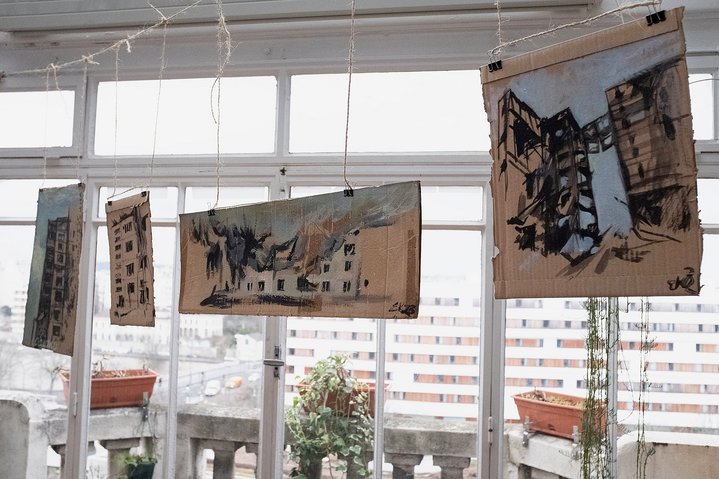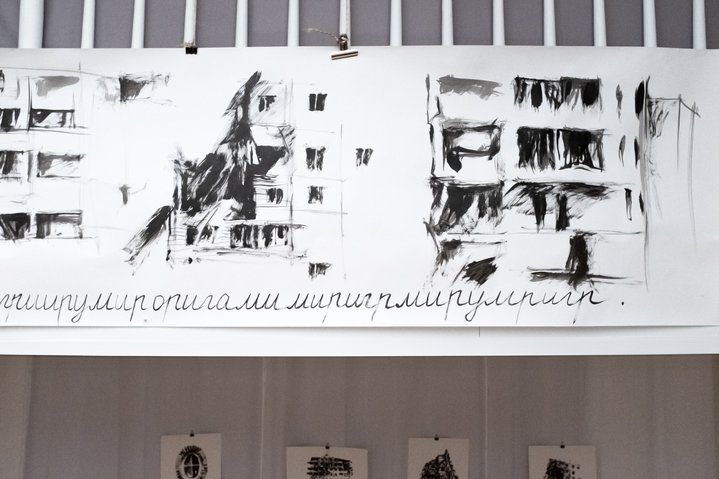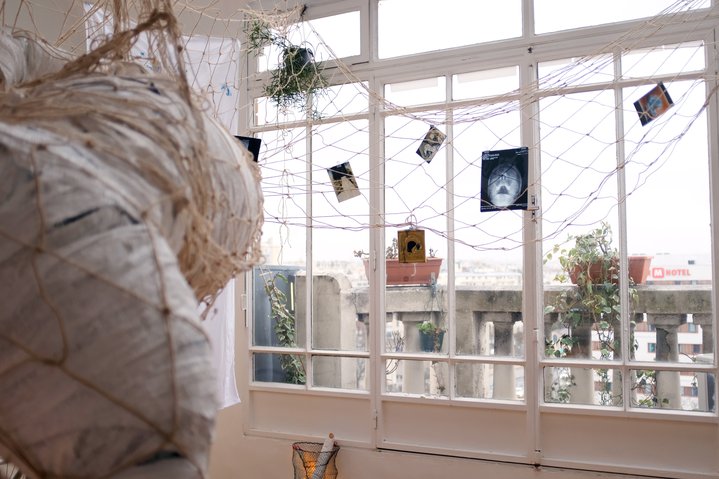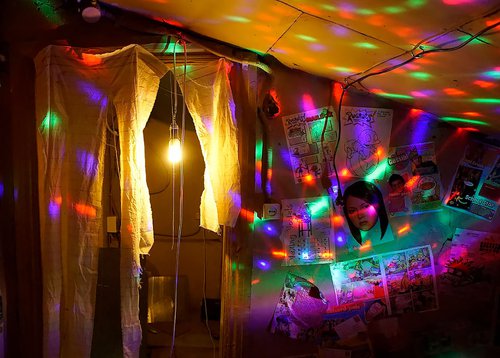re: location Episode I: Nastya Rodionova. Inside the Whale. Photo credit: Ekaterina Costa
re: location Project in Paris Brings Emigre Artists into the Limelight
A series of contemporary art exhibitions in a historical Parisian studio invite us to reflect on the challenges of individual perception, cognitive bias and the illusive nature of our memories in the work of artists who have all made their home in the French capital.
Curated by Anastasia Kurlyandtseva and Olga Kisseleva (b. 1965), and later joined by Sonia Kovaleva, ‘re: location’ is a research project which is in a state of constant evolution. This trio of Russian born creatives from different generations is creating a series of exhibitions by artists living and working in Paris who originally moved there from different countries. Later this year, in addition to the exhibitions, there will be two interdisciplinary academic conferences. Kisseleva a teacher at the Sorbonne who works in the field of Art and Science and who has been living in Paris for almost three decades, was born in Leningrad in 1965. Each exhibition in the series has been hosted in her own studio at the edge of the Bois de Vincennes. Once the art studio of French painter Maurice Boitel (1946-1952) and a birthplace of the Nouvelle École de Paris movement, now it is a nexus of the latest international research. The exhibitions take place for only two days, each one dedicated to a different artist. The curators call them 'episodes', to emphasise their multi-part and temporal natures.
The first episode, ‘Inside the Whale’ by Moscow-born Nastya Rodionova (b. 1986) dives into personal reflections through the story of a migrating whale, inspired by a real whale which was discovered in the Seine, 70km from the centre of Paris in the Summer of 2022. Rodionova created an installation using a fishing net and a huge plaster whale which was suspended between the windows of the Parisian atelier. There are crab traps, X-ray scans, canvases and even an X-ray icon, all washed off with a special soundscape created by Dmitri Kourliandski (b. 1976). ‘What does 70km mean for a whale who measures distances by oceans and seas? Later it was reported that the whale had died. The whale is dead, long live the whale! But why did she swim towards us ? To devour us, thereby fulfilling Jonah’s myth? And, anyway, the whale didn't die, it is just that now we live inside the whale’, explains Rodionova. By rethinking her own personal experience of being in exile from Russia she asks that we reflect on the illusion of the notion of ‘another place’, which may be hiding inside yourself rather than somewhere else.
Next up was a series of works on paper called ‘NIKOMY NE NUZNAYA VESNA’ (‘An Unneeded Spring’) by Moscow-born artist Katia Kameneva(b. 1971) which she started in February 2022. Brush in her hand, she had been standing in her Paris studio scrolling through images of the war in Ukraine. To her, it seemed that Spring itself, which was imminent, was in some way ambiguous and unnecessary. ‘I looked out of the window and thought “what a useless spring. There will be no more spring”’. She started recalling her life as a student artist in Moscow, and her early days in the French capital, “I remember when painting was an act of discovery, a first painting done in the quiet of my new flat in Paris. The view from my window of a neat, bourgeois garden was captured with all my teenage innocence and the academic precision that I had been taught at art school in Moscow’. After decades of then experimenting with different media, ‘the devastating roar of war’ sent her ‘back to painting, brushes and colours’. She adds, ‘The view of the garden is the same, but the reflection of the world in the windows has changed’. She first showed this new series a year ago at collector Paquita Escofet-Miro’s home and then it migrated to Kisseleva’s studio. Broken windows contrast sharply with the art studio’s elegant white 1920s glass terrace.
The third ‘episode’, which is currently on view, features two artists: Moscow-born Sergei Prokofiev (b.1983) and Korean Jeong-Soo Joh (b.1972), both preoccupied with the sequencing of their own memories. When Prokofiev arrived in Paris over two years ago he felt a sense of derealisation ‘I was in a state of urban multi exposure, where my brain began to project places from my memory directly on top of what I was seeing in front of me. Although it was triggered mainly by visual similarities between one place and another, sometimes certain smells, or even a small gust of wind, created these impositions’. His sets of coloured art objects consisting of different shapes and pieces of textile became not just a new form of practice for the artist but also a coping strategy with the new reality. A series of works made with Indian ink on paper by Joh show the evolution of nature. ‘I observe the interactions between flocks of birds and living beings in the sea through repetitive actions or material properties,’ she explains.
For Kurlyandtseva, a curator from Moscow who formerly worked at the State Tretyakov Gallery, and Kisseleva the choice of venue for their ‘episodes’ was natural. Located not in the most Parisian-style urban landscape, but on the edge of a wide avenue with tram tracks in a red-brick courtyard reminiscent of a well, for Kisseleva the location ‘echoes the imperial Stalinist style, typical of imposing avenues in Moscow, Warsaw, Minsk, Kyiv, Almaty and Tashkent’. When she had first moved into the studio, its surroundings had set off a chain of memories and emotions from her teenage travels between Soviet Leningrad and Kyiv, stays in Moscow, and former projects in urban spaces designed for cities across Central Asia. Focusing on the nature of communications and the boundaries of human perception in her practice for many years at her Art and Science laboratory at the Sorbonne, Kisseleva started to reflect on the functioning of mechanisms of human memories and cognitive abilities, which may be triggered under certain conditions and can be the reaction to a specific location.
‘Our research is not really about the juxtaposition of experiences, but rather about individual perceptions of the city. It is a very personal story by each artist about their inner feelings and sensations, about what excites them when they look at Paris as a new place in which to live, wherever they have come from. It is less important for us when and why these artists have ended up in Paris, but on how they perceive its reality and their own memories, based on different aspects of their background whether personal, political or socio-cultural. Our project invites artists to capture this perception of the ‘here and now’. Kurlyandtseva believes that the project will ultimately create meaningful comparisons.
Future episodes of ‘re: location’ will feature artists from Armenia, Bulgaria, Canada, Japan, Iran, Russia, South Korea and Uzbekistan with guest curators such as Mizuho Yamazaki from Japan.
re: location Episode III: Sergei Prokofiev. Veil of days. Jeong-Soo Joh. The clouds are leaving
Paris, France
22–23 March, 2024














